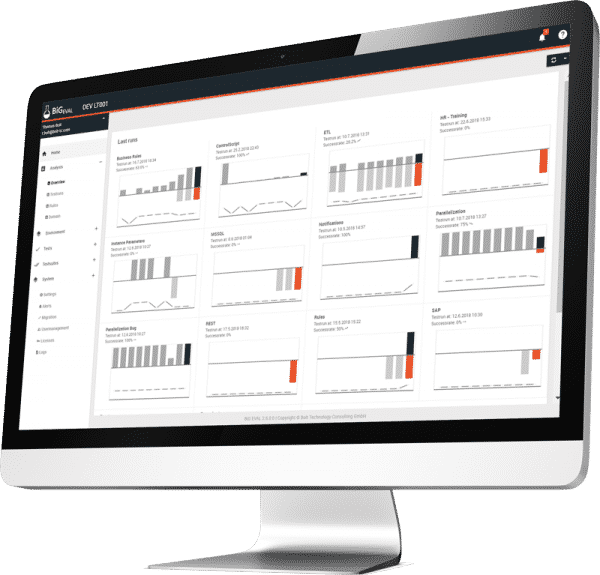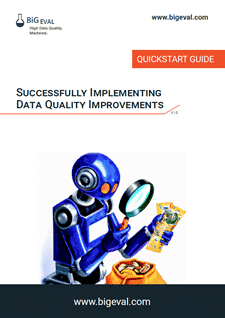Do Your AI/ML Models Learn From Unchecked Information?
A Vital Yet Intriguing Question!
What happens if you don't give data quality the emphasis it deserves when employing it in artificial intelligence learning algorithms?

Data quality is of outmost importance in the world of AI/ML. This is because the reliance of an AI model on data it gets trained on is exceptionally high. Unchecked information in the data can lead to getting plausible results on the training data, but poor results on test data. This is because the data quality does not depict an appropriate picture of real-life scenarios. So data quality can become a hindrance in the benefit received from an AI model.
An example is a business that predicts sales patterns of customers from particular regions. However, the data has an unbalanced ratio of male/female buyers, or distribution of buyers' demographic locations. Therefore, the AI model will not be able to give appropriate predictions if it does not have enough data from a particular region or gender to train on.
The training accuracy of the model will be high, and things will be looking good. The model may even perform well on the test data. However, eventually in the real world, once it will have to deal with situations that it hasn't seen before, it will fail. Thus, if a company decides to make a long-term business investment on specific expensive machinery based on such a model, it will likely suffer from a considerable loss.
Lives could be lost when data scientists develop models that show convincing results on poor-quality data that are utilized in real-life scenarios.
These are clear examples of why bad quality data must be avoided at any cost!
How can data quality be made better?
Hire a competent data scientist. Do not use unchecked information in your data, instead perform cross-checking and cross-validation procedures on it. The plethoric number of data resources means that unchecked information in data is bound to result in failure, since there must be errors in at least a few of the data resources.
Continuous data validation is needed to ensure the quality of newly arriving training data. This cannot be done manually because it’s simply too much work to do. Therefore, an automation solution for data validation is needed. BiG EVAL is such a solution that comes with efficient features like data comparison algorithms, business rules validation, workflow control and assisted problem solving in the case that data quality issues were detected.
Data quality can be enhanced by eliminating elements of bias, lack of complete information, uncalled for discrepancies, lack of variation, too many correlated features, too much generalization, amongst many others. This can be done through cross-checking and cross-validation. How cross-validation does the above can be studied here.
What if AI learned from erroneous data in the past?
Not much can be done if your AI/ML model has been trained on erroneous data except starting over in most cases since it had unchecked information. Two cases could be:
Wrong Labeling of Training Data
Now in the case where the train data had wrong labels, those need to be fixed. Once the labels are corrected, then the model must be retrained on the new data.
This is precisely why unchecked information in data can lead to tedious correctional procedures.
Biased Data Not Having the Requisite Variance Compared to Real-World Scenarios.
In the case of bias, perhaps the addition of more data could help the model improve. However, it would still be best to retrain the model if it was trained for a long time on the biased data.
In essence, it is best to cross-check and cross-validate the data before feeding it to a model.
How would data validation help to avoid or prevent these risks due to unchecked information?
Data validation actually plays quite a prominent role in the world of AI. It does this by preventing the risks mentioned in the above paragraphs that occur due to the unchecked information and enhancing the data quality.
A lot of the time, data that is fed into AI-based models is automated, and there is little to no human supervision. Henceforth, data validation kicks in by ensuring that not only the apt quality standards are met, but the unchecked information in the data is also checked beforehand. Therefore, before updating the database, data validation first performs its many checks as follows:
- Data Type Check
- Code Check
- Range Check
- Format Check
- Consistency Check
- Uniqueness Check.
The above checks are obvious to understand and do not require any elaboration. However, if more is desired, it can be found here. The risks of data that does not make any sense, or has been entered in incorrectly, or repeated amongst many others are mitigated through these checks.
Two examples of data validation can be: if the data contains an employee's salary that is out of range, data validation will detect it. When someone's date of birth does not make sense, data validation will catch that too. Therefore, data validation, more than not, checks the unchecked information in the data.
Conclusion (Summary)
To epitomize or give the gist of all that we have gone through above, we see that unchecked information in data can cause major disasters. In situations where those disasters are avoided, it still can result in tedious corrections and unnecessary waste of resources and time. To prevent such hindrances during ML and AI procedures, which are complex in their own right, it is better to take precautions beforehand. Cross-checking, cross-validation, and data validation are various techniques that can be utilized for this purpose. Once a model has been trained on incorrect data, going back or fixing it is no joke!
Do the first step! Get in touch with BiG EVAL...

FREE eBook

Successfully Implementing
Data Quality Improvements
This free eBook unveils one of the most important secrets of successful data quality improvement projects.



